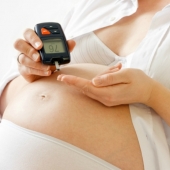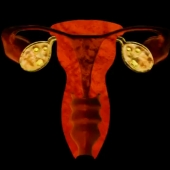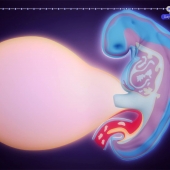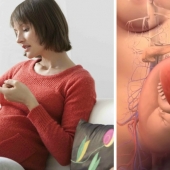During each normal menstrual cycle, one egg (ovum) is usually released from one of the ovaries, about 14 days after the last menstrual period. Release of the egg is called ovulation. The egg is swept into the funnel-shaped end of one of the fallopian tubes.
At ovulation, the mucus in the cervix becomes more fluid and more elastic, allowing sperm to enter the uterus rapidly. Within 5 minutes, sperm may move from the vagina, through the cervix into the uterus, and to the funnel-shaped end of a fallopian tube—the usual site of fertilization. The cells lining the fallopian tube facilitate fertilization.
If a sperm penetrates the egg, fertilization results. Tiny hairlike cilia lining the fallopian tube propel the fertilized egg (zygote) through the tube toward the uterus. The cells of the zygote divide repeatedly as the zygote moves down the fallopian tube. The zygote enters the uterus in 3 to 5 days. In the uterus, the cells continue to divide, becoming a hollow ball of cells called a blastocyst. If fertilization does not occur, the egg moves down the fallopian tube to the uterus, where it degenerates, and passes through the uterus with the next menstrual period.
If more than one egg is released and fertilized, the pregnancy involves more than one fetus, usually two (twins). Because the genetic material in each egg and in each sperm is slightly different, each fertilized egg is different. The resulting twins are thus fraternal twins. Identical twins result when one fertilized egg separates into two embryos after it has begun to divide. Because one egg was fertilized by one sperm, the genetic material in the two embryos is the same.
- 8688 views













